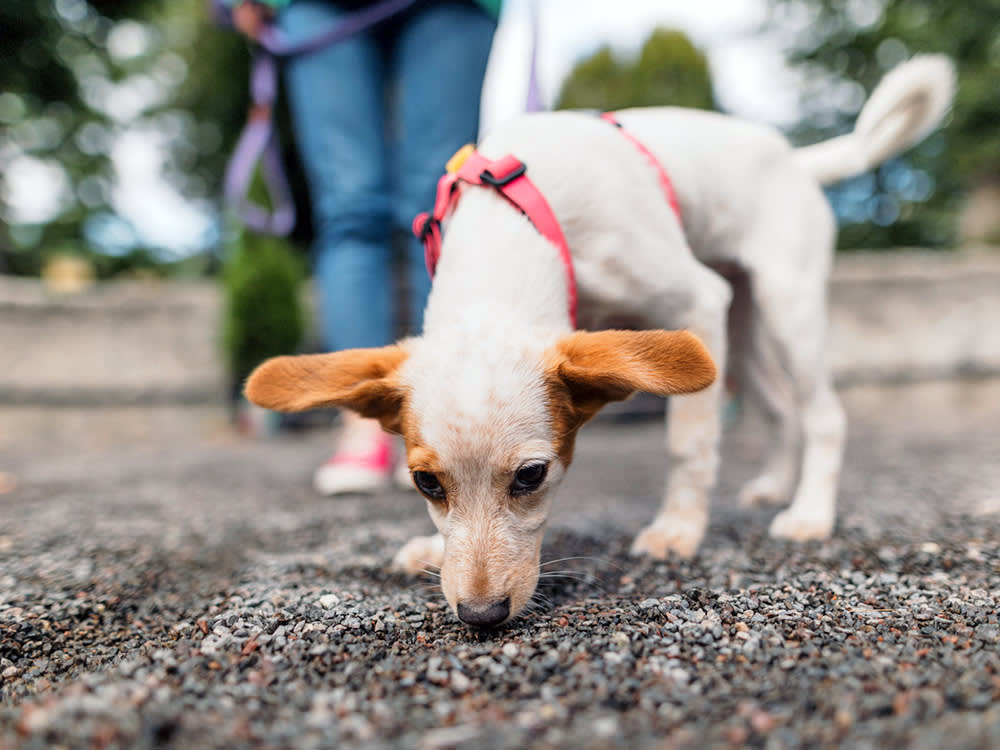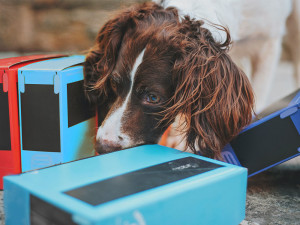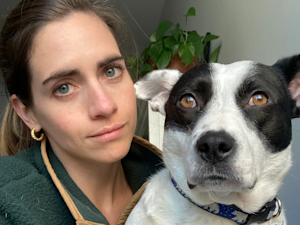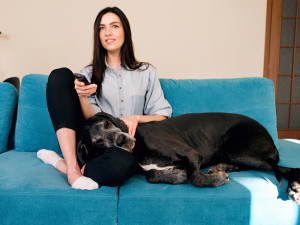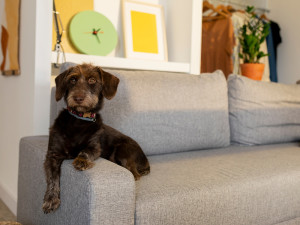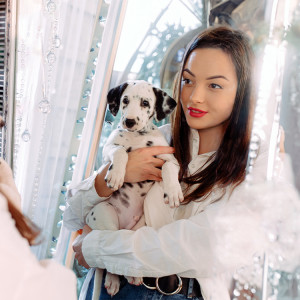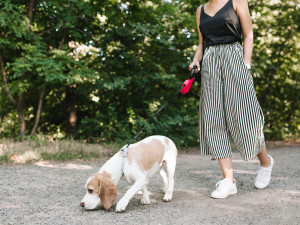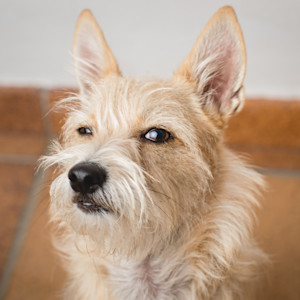The Way Your Dog Perceives the World Impacts Their Behavior—the Theory of “Umwelt”
Their noses really are their superpower—here’s why.
Sometimes, it feels like our dogs are living in a different reality. They might bark at things we can’t see. Or they might might obsess over sniffing what seems like an inconsequential blade of grass.
However, according to the concept of “umwelt” (pronounced “oom-velt”), our pets really are living in a different world from us — in a way. Umwelt holds that all animals perceive the world in unique ways, based on the signals they do (and don’t) pick up from their environment. For example, if you put a human, a bat, and a dog in the same room, each would perceive that room differently.
Trick question: All dogs are perfect! But find out which type is the best fit for you.
To better understand the umwelt of our dogsopens in new tab, we spoke to Alexandra Horowitz head of the Dog Cognition Lab at Barnard College and author of Inside of a Dog: What Dogs See, Smell, and Know, a bookopens in new tab all about dogs’ umwelt. We also spoke with veterinary behaviorist Dr. Margaret M. Duxbury about how understanding our dogs’ umwelt can help us build a better bond with our pets.
Understanding our dogs’ umwelt
As humans, sight largely dictates how we understand and navigate the world. Our senses of hearing, touch, and smell also play important roles. Dogs use the same senses but in different ways. Here are some of the biggest differences between a dog’s umwelt and our own.
How much do you spend on your pet per year?
Sniffing the world
A dog’s sense of smell is truly magnificent — and it’s generally accepted as the primary sense dogs use to understand the world. “Dogs live in an olfactory world,” Horowitz says. “Odors, though, act differently than light: When we open our eyes, the world is just laid out in front of us. An olfactory creature, though, has to act — by sniffing! — and by moving their body to the odor to ‘see’ the world.”
According to a 2021 paperopens in new tab, dogs rely on smell for “gathering important information about the environment, recognizing individuals, making decisions, and learning.” Smell allows dogs to gather informationopens in new tab — both current and historical — to detect drugs, suss out illnesses, and even monitor changes in our mood.
Seeing what we can’t
While smell is the primary way dogs navigate the world, vision is important, too. “Anyone who thinks their dog is starting at ‘nothing’ in the distance or on the ground is missing their umwelt,” says Horowitz. “They are just smelling or seeing things we can’t.”
Horowitz notes that our dogs’ vision is different from our own in a few ways: Dogs have two-color vision, they are nearsighted, and they have a faster “flicker-fusion” rate, meaning their brains might notice something a split second before we do. As a result, our dogs might respond to us before we expect or notice things we don’t.
Other key aspects of umwelt
As humans, we primarily communicate through spoken language. While dogs vocalize as well, they heavily rely on body language for communication. In Inside a Dog, Horowitz says that every gesture related to ear position, eye contact, and body posture conveys a feeling, intention, or message for dogs.
Duxbury notes that it’s important to remember that all these senses are related and work together. Other factors, such as how dogs socialize and their cognitive abilities, also contribute to their umwelt.
How to support your dog’s umwelt
Understanding that our dog’s point of view is entirely different from our own can help pup parents overcome challenges that come with a dog living in a human-centered household, Horowitz says.
“For us, it’s obvious that everything in the house has a role or a way it’s used: the couch to sit on, the shoe to wear,” she says. “For the dog, these roles are not defined. One is where you sit (so they may try to sit there themselves), and another smells like you (so they may want to mouth it). There are innumerable other instances.”
Rather than getting mad if your dog does something unexpected or unwanted, Duxbury recommends practicing rewards-based training and putting into place practices that align your dog's umwelt.
“For dogs to live their best lives, they need plenty of chances to be a dog,” Duxbury says.
Consider the following practices that take into account your dog’s umwelt and might help you build a better bond:
Allow your dog to sniff on walks: “Dogs need a chance to amble and actually spend two minutes sniffing a blade of grass,” Duxbury adds. Instead of rushing through walks, let your dog sniff at their leisure.
Practice scent training: Scent training lets dogs test the limits of their olfactory abilities while providing excellent physical and mental exercise. If your dog has a particularly keen nose, they could even participate in nose work competitions.
Be aware of body language: Study your dog in different situations so you can better pick up on subtle cues indicating if they’re stressed, happy, unsure, etc. Remember, body language is a two-way communication street: If your body language doesn’t match your verbal cues, you might be unintentionally stressing out your dog.
Don’t undervalue socialization: Duxbury notes that the first few months of your dog’s life during the socialization period are key. “The dog’s brain learns what’s seen as normal and usual versus what’s threatening,” she says. Follow safe socialization practicesopens in new tab to make sure your dog grows up happy and comfortable in various environments.
Different umwelts, one connection
Living your life according to someone else’s rules and schedules isn’t always fun or easy. The same goes for our dogs. “Just thinking about the challenge of being a dog whose day is dictated by someone else — they have to wait for us to eat, to pee, to socialize, etc — made me much more compassionate about letting my dogs make their own choices, and try to be more in touch with their actual needs (not just what one might assume dogs need),” Horowitz says.
Like any worthwhile relationship, it may take some work to better understand your dog’s point of view. But for Duxbury, the work that goes into building a bond with our dogs is worth it: “What a gift it is to have that interspecies connection,” she says.
